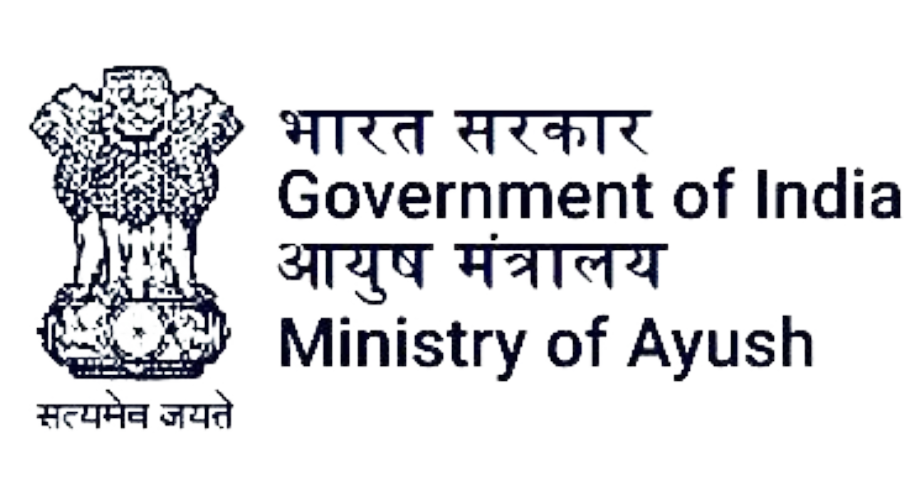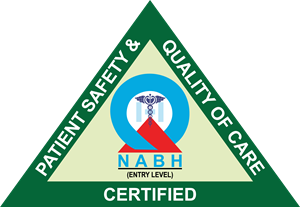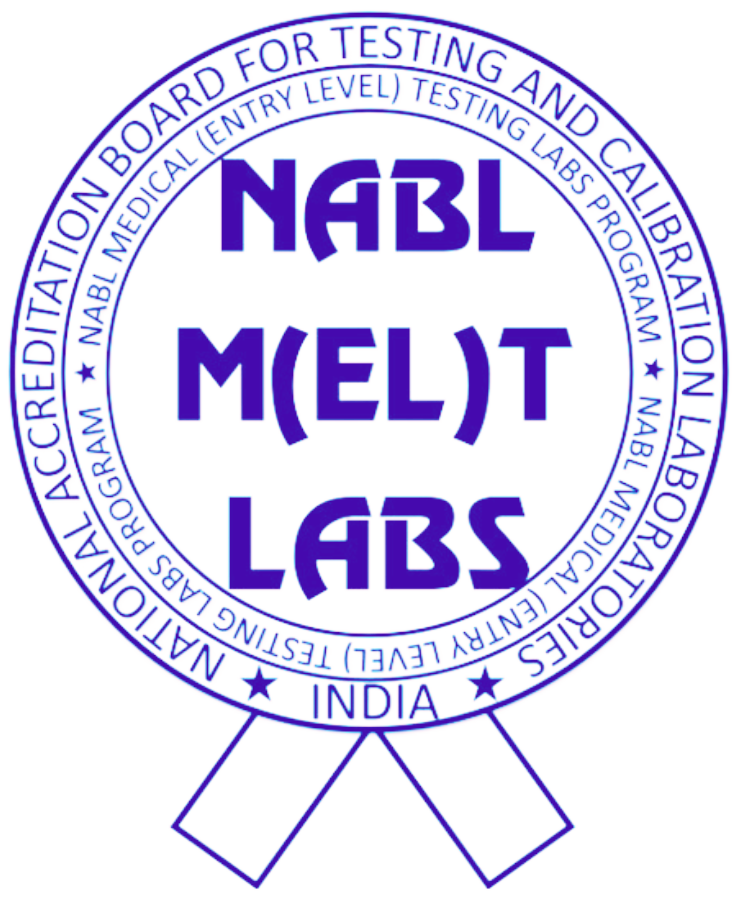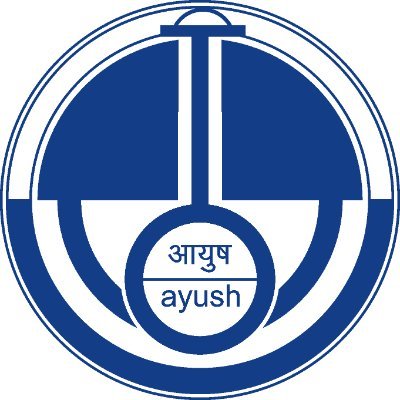ಕೇಂದ್ರೀಯ ಆಯುರ್ವೇದ ಸಂಶೋಧನಾ ಸಂಸ್ಥೆ
केन्द्रीय आयुर्वेद अनुसंधान संस्थान
CENTRAL AYURVEDA
RESEARCH INSTITUTE
Centre of Excellance in Madhumeha
Central Council for Research in Ayurvedic
Sciences (CCRAS)
Ministry of AYUSH, Govt.
of India
Background
Ayurveda literally meaning the science of life is a comprehensive system of health care indigenous to India. The earliest documented evidence of this science is in compendia of Indian wisdom called Vedas, which are believed to be documented around 6000 years back. Rigveda and Atharveda are replete with information on health and maladies and their management with natural modes and modalities. The knowledge expanded further with laying down of fundamentals and concepts of Ayurveda and systematization in classical texts like Charak Samhita, Sushruta Samhita and Astanga Sangraha. Present form of Ayurveda is the outcome of continued scientific inputs that has gone into the evolution of its principles, theories and guidelines of healthy living and disease management. Considering health of an individual as dynamic integration of environment, body mind and spirit, Ayurveda lays great emphasis on preservation and promotion of health and prevention of occurrence of diseases. Besides, it advocates holistic approach to understand all aspects of human life including diagnosis and management of disease.
Strength of Ayurveda
Ayurveda attributes primary importance to preventive medicine and the maintenance of positive health. Ayurveda addresses all aspects of life--the body, mind, soul and environment. It recognizes that each of us is unique, each responds differently to the many aspects of life, each possesses different strengths and weaknesses. Through insight, understanding and experience Ayurveda presents a vast database of the relationships between cause and the affect, both immediate and subtle, for each individual.
Basic principles
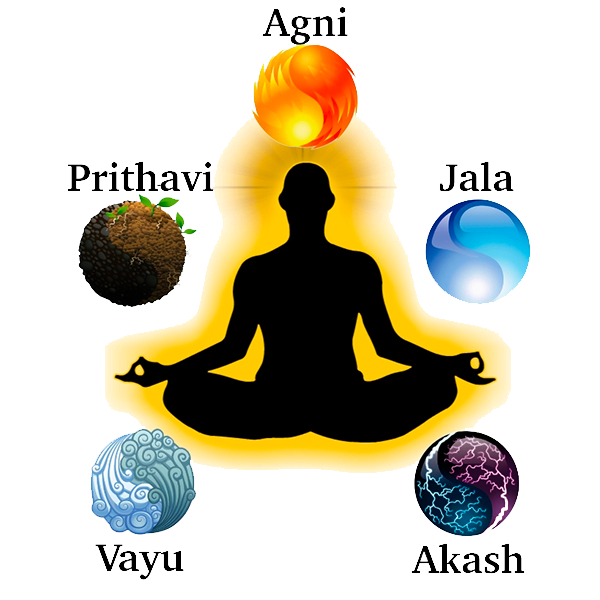
The objective of Ayurveda is preservation and promotion of the health of a healthy
person and
restoration
of health in the diseased. Good health is the fundamental prerequisite to acquire
materialistic, social
and spiritual upliftment of human being.
The Universe, according to Ayurveda is composed of five basic elements - Pancha
Mahabhootas viz.
Space
(Akasha), Air (Vayu), Fire (Agni), Water (Jala) and Earth (Prithvi). As the
human body is
similarly
constituted, there is a fundamental similarity between universe and man. A healthy
balance between the
microcosm (human being) and the macrocosm (universe) is the basis of health.
Ayurveda is based on the theory of three biological humours (Tridosha) i.e. Vata,
Pitta
and Kapha, seven
body tissues (Saptadhatu) viz., fluid components of the body (Rasa), Blood (Rakta),
Muscle tissue
(Mamsa),
Adipose tissue (Medas), Bone tissue (Asthi), Bone marrow (Majja) and reproductive
elements (Sukra) and
three bio-wastes (Trimala) i.e. Urine (Mootra), Faeces (Pureesha) and Sweat (Sweda).
The
essence of
saptadhatu called Ojas is responsible for the immunity and strength of the
individual.
Diagnostics
Every individual has a peculiar body-mind constitution which is responsible for the
health or disease
pattern of an individual. Ayurvedic concept of examination of constitution (Prakriti
pareeksha) is to
know
body- mind constitution while selecting diet, medicine or treatment regimen. Human mind
has three
components (triguna) i.e. Sattva (pure state of mind), Raja (passion/ desire) and Tama
(inertia/
ignorance), which interact with the biological components Vata, Pitta & Kapha and
decides the
psychosomatic constitution of an individual (Prakriti).
The diagnosis in Ayurveda is based on two-fold approach to diagnostics viz.
(1) Examination of the patient i.e., Rogi-pareeksha; and
(2) Understanding of the disease right from the exposure to the etiology till its
manifestation i.e.,
Roga- pareeksha.
The Rogi- pareeksha is essentially concerned with ascertaining the constitution of the
individual and
status of his health and vitality. This is achieved through ten fold examinations of the
patient
(Dasavidha pareeksha) comprising of
(1) Constitution (Prakriti)
(2) Disease susceptibility (Vikriti),
(3) Essence (Sara),
(4) Compactness (Samhanana),
(5) Anthropometry (Pramana),
(6) Compatibility (Satmya),
(7) Mind (Sattwa),
(8) Digestion capacity of food (Aharasakti),
(9) Physical strength (Vyayamasakti) and
(10) Age (Vaya).
The general examination is made through popular eight types of examination of patient
(Ashtasthana
pareeksha) comprising examination of pulse (Nadi), urine (Mootra), faeces (Mala), tongue
(Jihva), voice
(Sabda), touch (Sparsha), eye/vision (Drik) and stature (Akriti) and also considering
the state of
pathways of internal transport systems (Srotas) and digestive faculty (Agni).
Concept of health
Health is a state of complete physical, mental and social well being and not merely
absence of disease.
Attributes of healthy human being are indicated in Ayurveda as ability to perform daily
chores without
any
difficulty, desire to eat in time, proper and timely digestion of food, feeling of
freshness after
waking
up in the morning, regular and proper defecation and micturition, optimal functioning of
all the sense
organs, pleasant, calm , happy and contented state of mind. The healthy state of a
person is often
disrupted by faulty lifestyle, diet, physical activity, emotions and behaviour.
The diseases are caused due to imbalance of Tridosha caused from various reasons like
hereditary, faulty
food habits and life style, seasonal variations, vitiated atmosphere, or injury. The
entire phase right
from the exposure to causative factors to the production of disease is known as
Samprapti. Vitiation of
Agni, the digestive and metabolic energy is mainly responsible for causation of systemic
diseases.
Approach to health
The major preventive approaches for maintaining and improving the quality of life
include individualized
specific daily regimen (Dinacharya), seasonal regimen (Ritucharya), behavioral and
ethical
considerations
(Sadvritta). Healthy lifestyle is emphasized as the determinant of longevity of life,
which by and large
depends on the Prakriti (bio – identity i.e. body – mind constitution) of an individual.
Proper
understanding of Prakriti helps the physician in making right diagnosis, prognosis and
treatment plan
including lifestyle recommendations for restoration and maintenance of health.
The therapeutic streams advocated in Ayurveda comprise of Spiritual measures
(Daivavyapasraya chikitsa),
Pharmacological therapies (Yuktivyapasraya chikitsa) and Non – pharmacological
psychotherapies
(Satvavajaya). The treatment plan is worked out on the basis of underlying morbidity
keeping in mind the
strength of the disease and the tolerability of the patient. Four – pronged treatment
plan consisting of
avoidance of causative and precipitating factors of disease (Nidan Parivajan), bio –
purification
(Samshodhan), use of palliative remedies (Samshamana) and health – promoting regimen
(Pathya Vyavastha)
is
the hall mark of Ayurvedic therapeutics recommended for physicians to prescribe,
specific diet and
lifestyle guidelines are always prescribed along with the drugs and therapies so as to
facilitate
restoration of bio – humoral balance (dhatu samyata) and health status.
Specialized Therapeutic Procedures
Ayurveda emphasizes on preventative and healing therapies along with various methods of purification and rejuvenation. Scientific studies have validated the efficacy and acceptability of these procedures.
Panchakarma

Panchakarma comprising of five major procedures is basically a bio-cleansing regimen,
which facilitates
the body system for better bioavailability of the pharmacological therapies. These
therapies help in the
elimination of disease-causing factors and maintain the equilibrium of body tissues
(dhatus) and humours
(doshas) in the body. This is used both for prevention, management and rehabilitation in
chronic and
debilitating diseases. Presently in many countries oil massage, shirodhara (pouring of
medicated liquid
on
forehead) and some other procedures are popularly practiced as Panchakarma but those are
not the actual
Panchakarma, which is classically practiced in Ayurveda. Panchakarma has wide dimension
and scientific
approach. The comprehensive description is available in the classical texts about the
indications,
contraindications, methods, possible complications and their management, possible errors
in performing
the
Panchakarma procedures etc. Panchakarma therapy has three major components :
(a) Preparatory procedures (Poorvakarma) for Panchakarma therapy:before performing
Panchakarma,
preparatory procedures are essential. These are :
1. Internal medication for increasing the digestive process (Pachana- Deepana).
2. Internal use of medicated oil/ghee and external application of oils (Snehana).
3. Medicated Sudation- fomentation (Swedana).
(b) Main procedures (Pradhanakarma) of Panchakarma therapy :
1. Vamana karma (Therapeutic emesis)
2. Virechana karma (Therapeutic purgation)
3. Anuvasana vasti (Oil/unctuous enema)
4. Asthapana vasti (Decoction based enema)
5. Nasya karma (Nasal administration of medicaments)
(c) Post therapeutic procedures (Paschatkarma) :
1. Dietary regimen (Samsarjana karma)
2. Regulated lifestyle
Benefits:
The textual recommendation of Panchakarma for various below mentioned areas have been
validated through
research :
1. For preventive, promotive health purpose
2. Management of various systemic disease viz. joint disorders, musculoskeletal,
dermatological,
neurological, psychiatric, geriatric, gynecological disorders, respiratory disorders
etc.
3. The regimen is also widely prescribed in chronic incurable diseases for improving the
quality of
life.
Kshara Sutra
A procedure using medicated thread is a unique minimal invasive para-surgical approach being successfully practiced as promising therapy for ano-rectal disorders since time immortal by Indian surgeons ,widely cited in ancient medical literatures for its safety and efficacy. This technique was practiced by Sushruta (1000-600 B.C.), the famed ancient Indian surgeon. This technique was revived, developed and standardized in early seventies by eminent scientists like Prof.P.J.Deshpande, Dr.P.S.Shankaran (Banaras Hindu University, Varanasi ).
Rasayana
Literally, rasayana means the augmentation of rasa, the vital fluid produced by the digestion of food. It is the rasa flowing in the body which sustains life. Rasayana in ayurveda is, the method of treatment through which the rasa is maintained in the body. This is a specialized branch of clinical medicine meant for preventing the effect of ageing and to improve memory, intelligence complexion, sensory and motor functions. Numerous rasayana medicines are reported for possessing diversified actions like immuno-enhancement, free radical scavenging, adaptogenic or antistress and nutritive effect.
Ancient literatures of Ayurveda
The main source of knowledge of Ayurveda today is two sets of texts each consisting of three books which are named after the authors viz.
Brihattrayi (three major classics)
i. Charaka Samhita - (1500-1000 B.C.) written by Charaka- The famous philosopher
and physician is
the writer of charaka samhita which is mainly devoted to preventive and curative
internal medicine. The
original source of this book is agnivesha samhita, based on the teachings of Punarvasu
Atreya.
ii. Susruta Samhita (1500-1000 B.C.) written by Sushruta- Famous Physician &
Surgeon. He also
wrote
a book named as Sushrut Samhita. It is a compendium of surgery and military medicine. It
deals with all
the eight branches of Ayurveda elaborately that includes toxicology. Cadaver dissection,
Practical
surgical training and major surgeries for impacted foreign body Arbuda (different types
of tumors),
Aghata
(trauma injuries), dushta vrana (non healing wounds), Udar (ascitis), Asthi bhang
(Fractures of bones)
urinary stones, intestinal obstruction, perforation of intestine etc. In addition
Sushruta and his
followers have suggested procedures, which deal with complications during pregnancy and
labour. Sushrut
sanhita gives directive principles in case of obstruction in intestinal loop. for
obstructed labour. The
rhinoplasty, earlobe correction and catarectomy are also explained in this text.
iii. Vagbhata (600 A.D.) Vagbhata is one of the three classic writers of
Ayurveda, who wrote the
Ashtanga Sangraha and the Ashtanga Hridaya Samhita
Laghuttrayi (three minor classics)
i. Madhava Nidana (700 A.D.), written by Madhava is a most referred treatise for
etiopathogenesis
of the diseases.
ii. Sarangdhara Samhita (1300 A.D) written by sharangdhara is a abridged version
of earlier
samhitas
iii. Bhava Prakasha (1600 A.D) written by Bhava Mishra.
The practitioners and visionaries like Kashayapa, Bhela, Hareeta also wrote their
respective Samhitas
(treatises). The ancient texts were updated and methodically written by many authors
from time to time
in
later period.
National scenario
More than 80% of population in India is reported to use Ayurveda and MEDICINAL PLANTS to meet their primary health care needs & the health care services are being extended to the masses through a huge network of 4,60,001 qualified Ayurveda practitioners, 2416 Ayurveda hospitals, 13989 dispensaries, 241 undergraduate and 64 post graduate colleges with total admission capacity of 12,427 and 7910 drug manufacturing units producing classical & proprietary Ayurvedic products (Ref. AYUSH in India 2008).
Ministry of AYUSH (Ayurveda, Yoga & Naturopathy, Unani, Siddha, Sowa-Rigpa and Homoeopathy )
The Ministry of AYUSH was formed on the 9th of November 2014 with a vision of reviving the profound knowledge of our ancient systems of medicine and ensuring the optimal development and propagation of the Ayush systems of healthcare. Earlier, the Department of Indian Systems of Medicine and Homoeopathy (ISM&H) was created in March,1995 under the ministry of health and family welfare, Government of India and re-named as department of AYUSH in November, 2003 with a view to providing focused attention to development of Education, health care & Research in Ayurveda, Yoga & Naturopathy, Unani, Siddha and Homoeopathy systems. The Department continued to lay emphasis on upgradation of AYUSH educational standards, quality control and standardization of drugs, improving the availability of medicinal plant material, research and development and awareness generation about the efficacy of the systems domestically and internationally. There are State Directorates/State Boards/Councils in the states which act as regional governance in regulating AYUSH issues like education, practice, research and manufacturing of medicines.
Regulatory Structure
Recognized traditional systems of medicine in India are regulated in the country by following Acts and Rules :
Major Acts
i. Indian Medicine Central Council (IMCC) Act, 1970 for regulation of education standards &
clinical
practices
ii. Indian Drugs & Cosmetics Act, 1940 with the amendment of the Act, in 1964 for
manufacturing for sale
and
quality control of Ayurveda, Siddha and Unani drugs. Important provisions of this act are:
✅ Regulation of manufacture and sale of Ayurvedic drugs through drug manufacturing license system.
✅Provision for Govt. drugs analysts
✅Prescribe methods of testing and analysis.
✅To establish laboratories for testing and analysis of drugs.
✅To recognize public, private drug testing laboratories for sample analysis.
✅Describe misbranded, adulterated and spurious drugs for punitive action (fine/imprisonment)
✅Schedule-T, prescribes good manufacturing practices (GMP)
✅Labeling/packing provisions for domestic use as well as for export
Other Relevant Acts
i. Food Standard & Safety Act 2006 to regulate the safety and standards of food items
etc.
ii. Drugs & Magic Remedies (Objectionable Advertisements) Act 1954 to prevent the misleading
advertisement
of certain cure claims on specific disease condition.
iii. Bio-diversity Act 2002 to regulate the exploitation of certain plants and animal
species used in
medicines etc.
iv. Wild Life Protection Act 1972 to preserve and protect the threatened animal species and
their parts
etc.
used in medicines etc.
v. Indian Forests Act 1927 to conserve the MEDICINAL PLANTS species going in medicine
Global scenario
• In spite of the advances in biomedical research and development, many new diseases are
emerging.
Prevention and management of chronic, non-communicable diseases is posing a global
challenge. Previously,
the communicable diseases were accounted for more incidents of death in the globe whereas in
the present
scenario chronic and lifestyle disorders and their complications have been the cause of
mortality in
general. These diseases lead to disability resulting in to loss of productivity of the
individuals. These
diseases need very long-term treatment just for palliative care, which involves major
economic burden on
the
individual and the country. Another serious issue is safety of synthetic medicines related
to long-term
use.
• In this scenario, the world is looking at holistic systems like Ayurveda for the solution. In view of the present scenario and limitations of conventional system, the strength of Ayurveda have been explored as solution for the management of chronic and degenerative diseases. A resurgence of interest in Ayurveda and Indian systems of medicine has resulted from the preference of many consumers for products of natural origin in developed countries too along with developing countries.
• At policy level in countries like Myanmar, South Africa, Malaysia, Hungary, Sri Lanka Ayurveda is officially recognized. In many countries, there is no restriction to practice Ayurveda, though it is not officially recognized. However, this indigenous Indian system is also popular in many foreign countries including USA and Europe. People use Ayurvedic medicines, which are marketed as dietary/nutritional/herbal supplements.
Given this global resurgence the department of AYUSH has been making efforts for promotion and
propagation
of
Indian systems of medicine in the following manner:
i. International exchange of experts & officers.
ii. Incentive to drug manufacturers, entrepreneurs, AYUSH institutions etc. for international
propagation of
AYUSH and registration of their products by USFDA/EMEA/UK-MHRA for exports.
iii. Support for international market development and AYUSH promotion-related activities.
iv. Promotion of Ayurveda, Unani and Yoga abroad through young Post Graduates.
v. Translation and publication of AYUSH books in foreign languages.
vi. Establishment of AYUSH information cells/health centres in Indian embassies/missions and in
the cultural
centres set up by Indian council for cultural relations (ICCR) in foreign countries and
deputation of
experts.
vii. International fellowship programme for foreign nationals for undertaking AYUSH courses in
premier
institutions in India.
